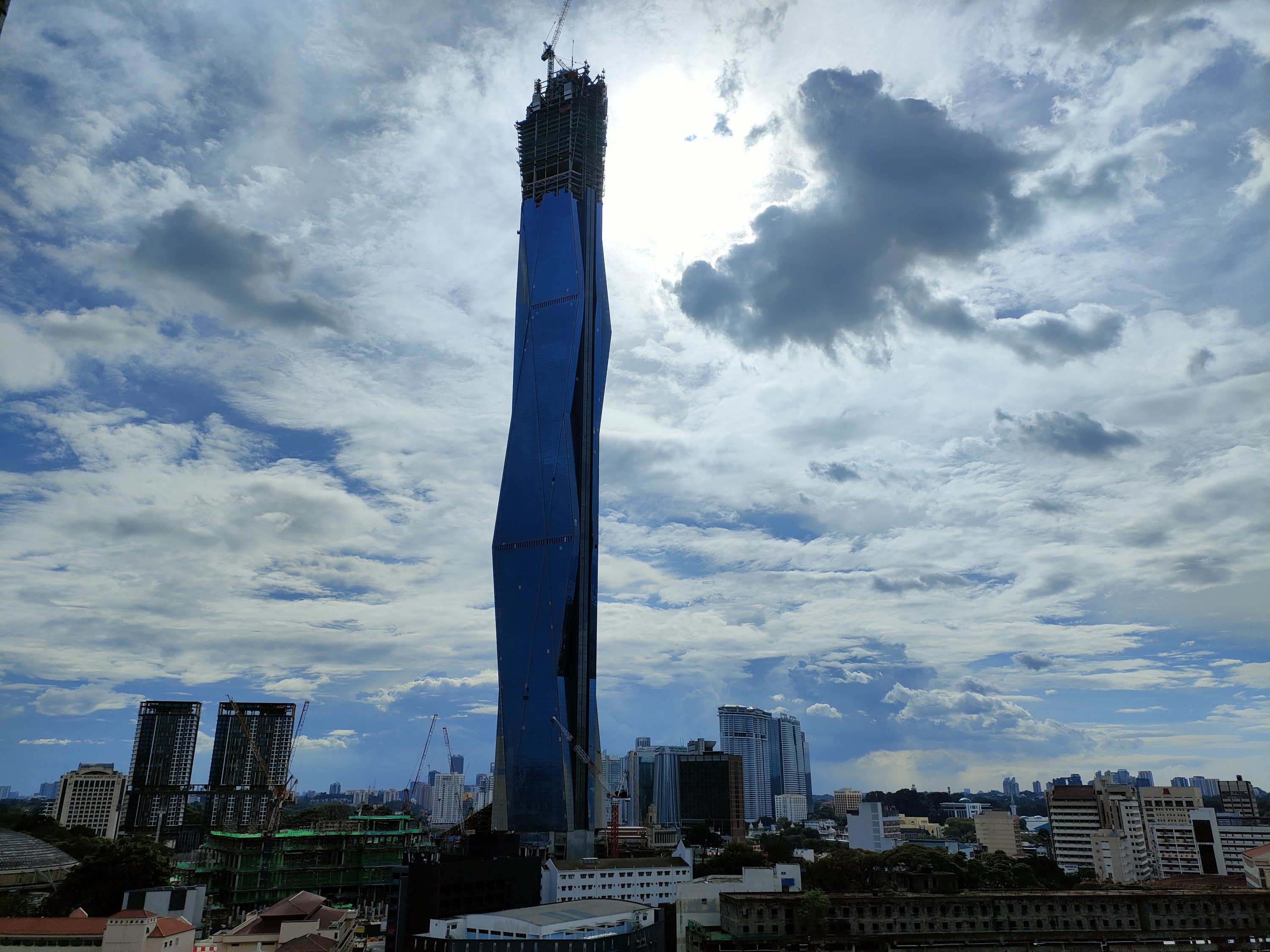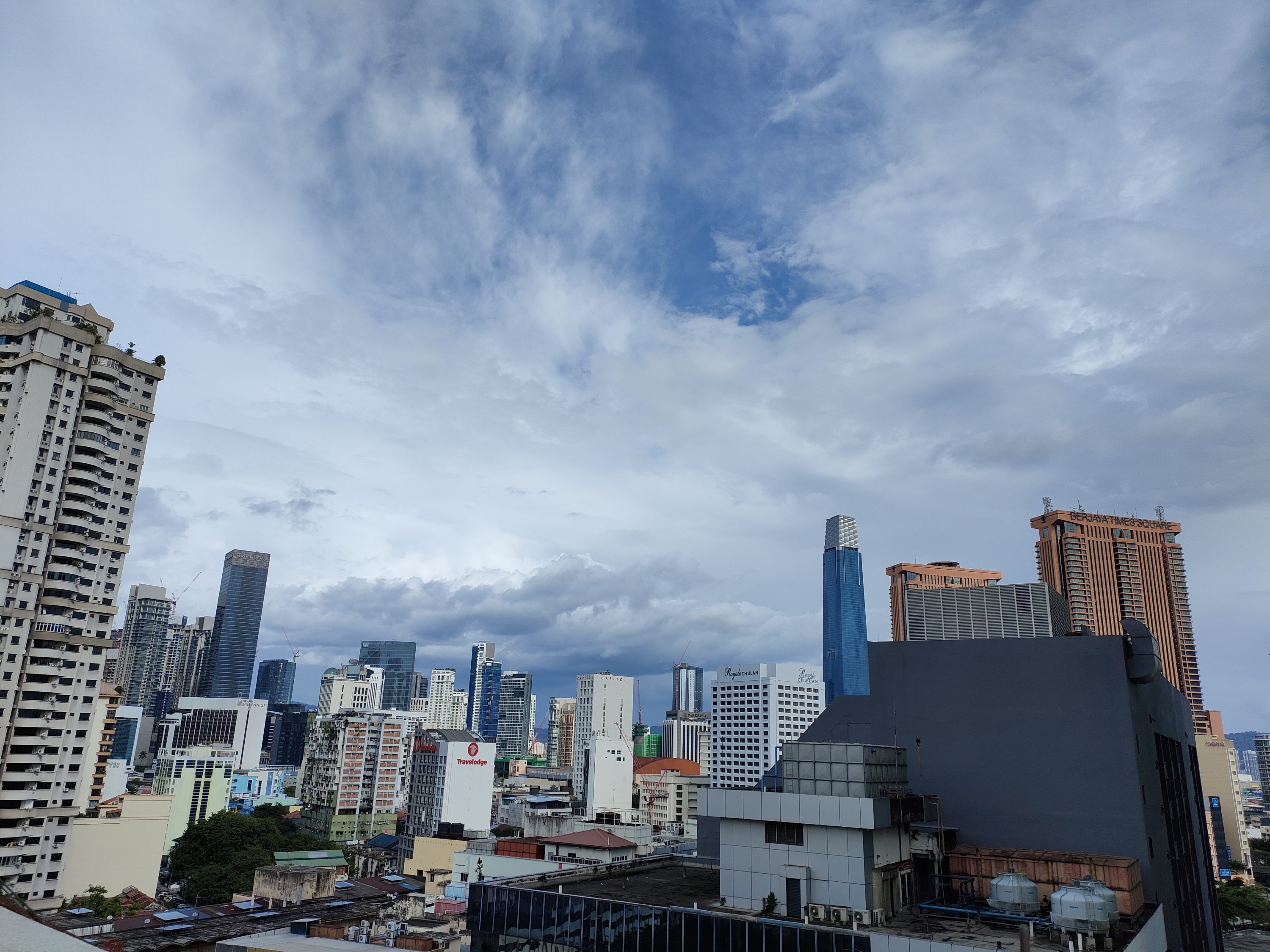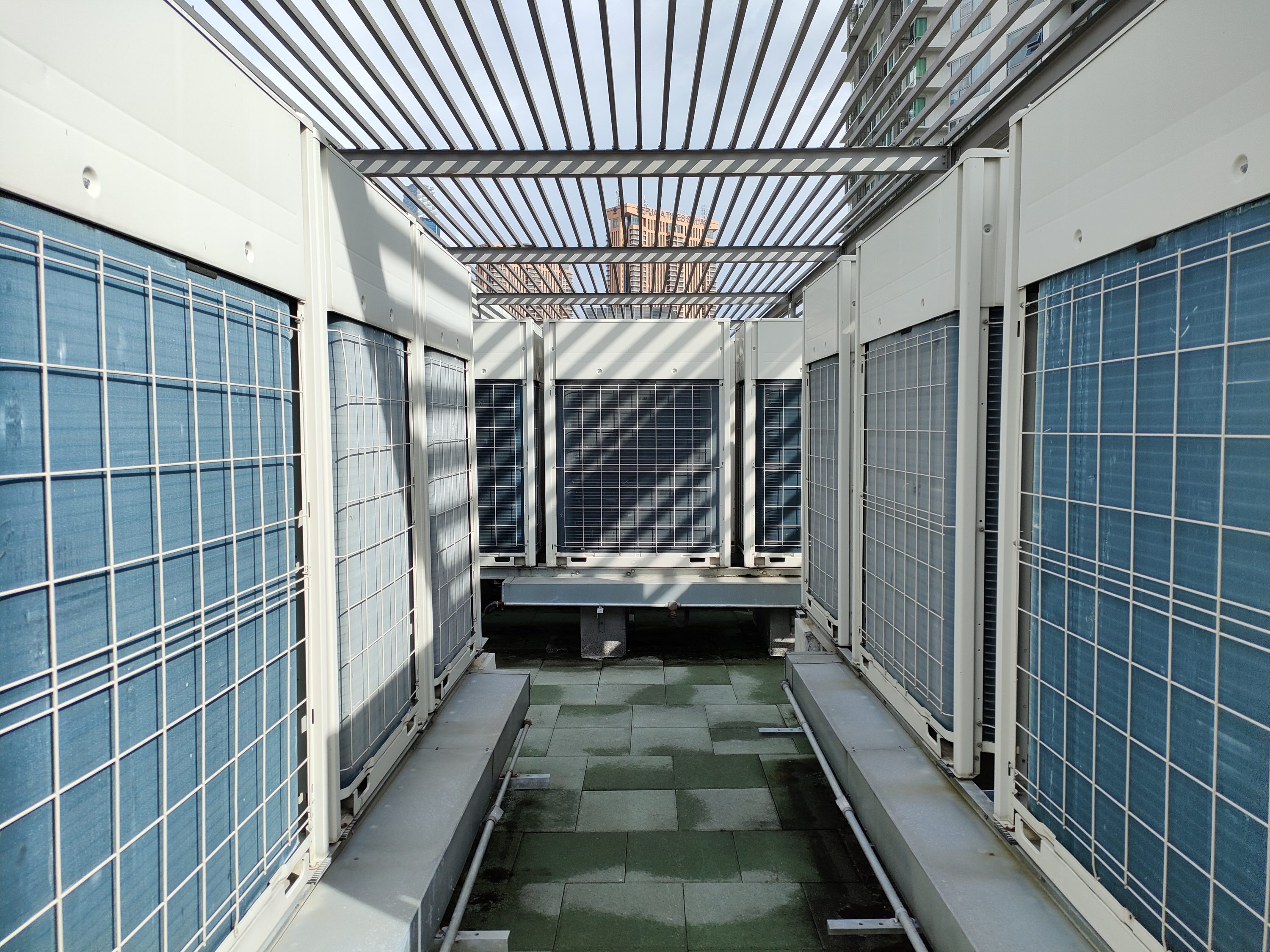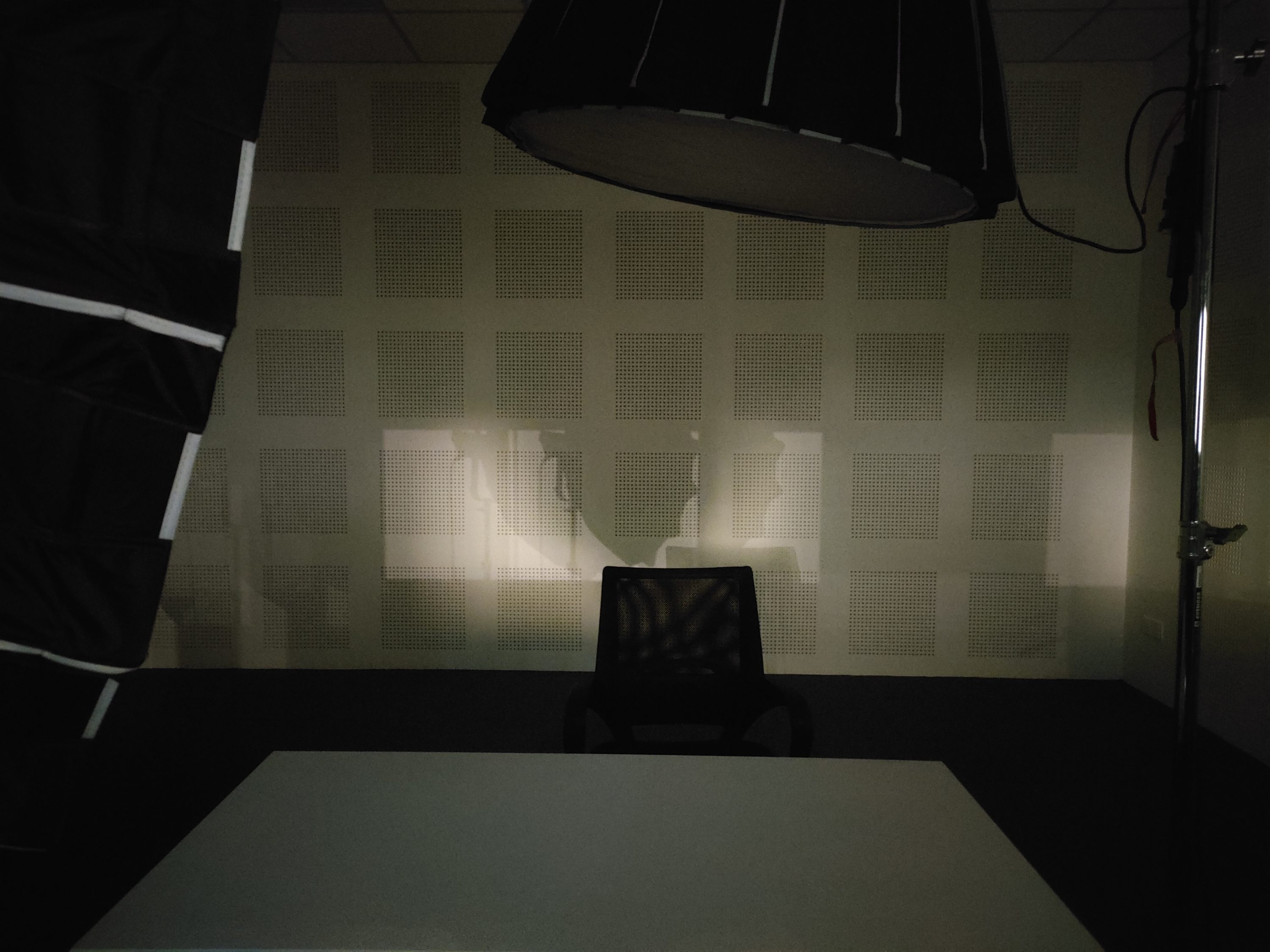I’ve always had a bit of a love-hate relationship with Oppo. I love the fact that they’re willing to push boundaries and come up with truly radical smartphones like the Oppo Find X. But, I’ve never really been a fan of their mid-range smartphones because they’re often not great value for money, yet also lack the ecosystem features that a brand like Samsung can offer.
So, every time I’m handed an Oppo device, like this brand new Reno 5, I always have to wonder: which side of the fence does this sit?
To say that the new Reno 5 is a head-turner would be an understatement. Especially in this Galactic Silver colourway, the Reno 5 is one of brightest smartphones I’ve seen to date. The colour also shifts and changes depending on how the light hits it, which isn’t new, but is still very much an attention grabber. I think the sheer brightness of the colour has to do with the new textured back design that Oppo has gone for.
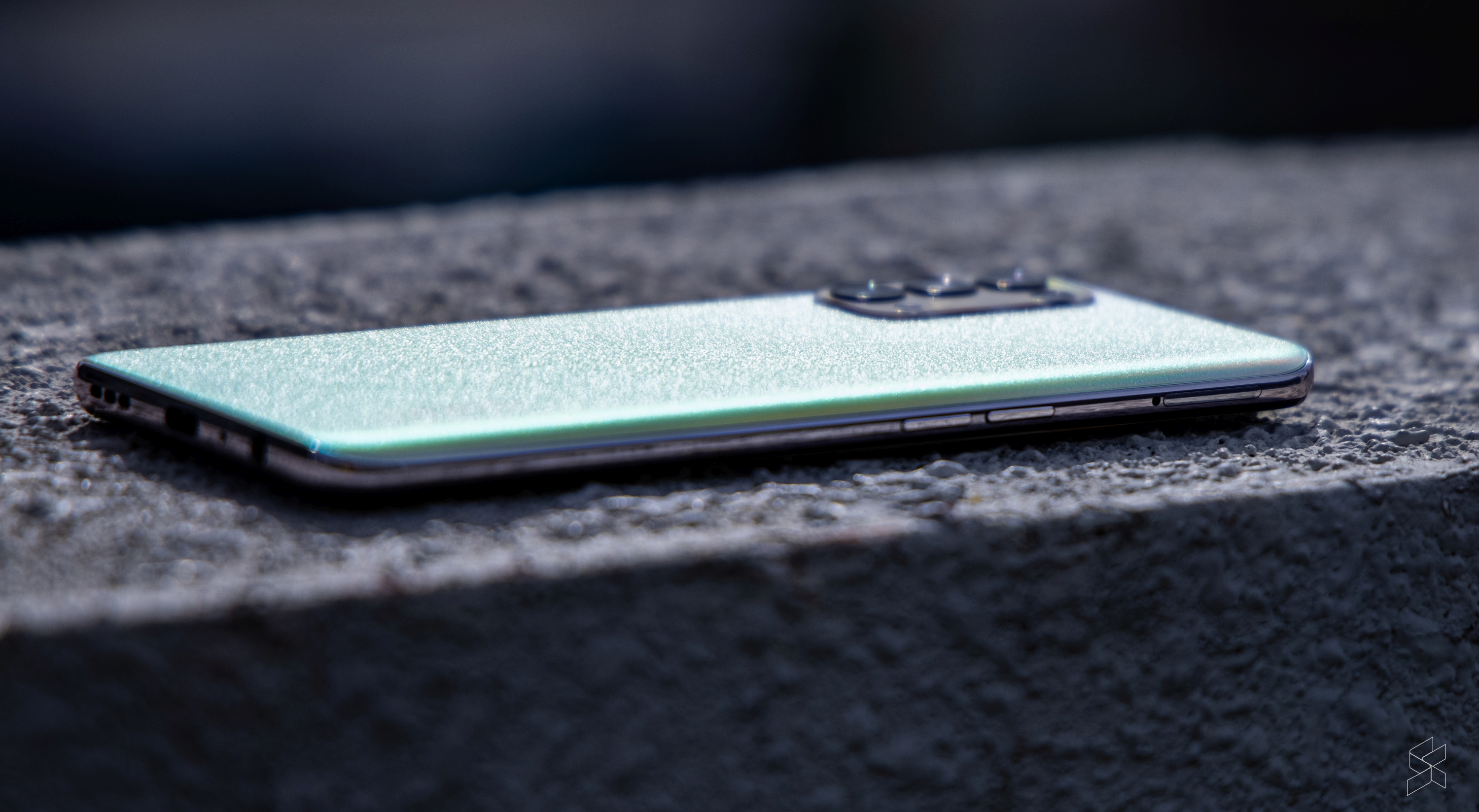
They call it the Diamond Spectrum Process with a Reno Glow, which is basically an over-the-top way of saying that it’s colourful and has a matte finish so it doesn’t show as many fingerprints.

I am impressed that they’ve managed to keep the phone this bright despite the matte finish, but the downside here is that the phone ends up feeling very plasticky. And that’s a little disappointing because something like frosted glass would have had similar fingerprint repelling characteristics while feeling more upmarket.
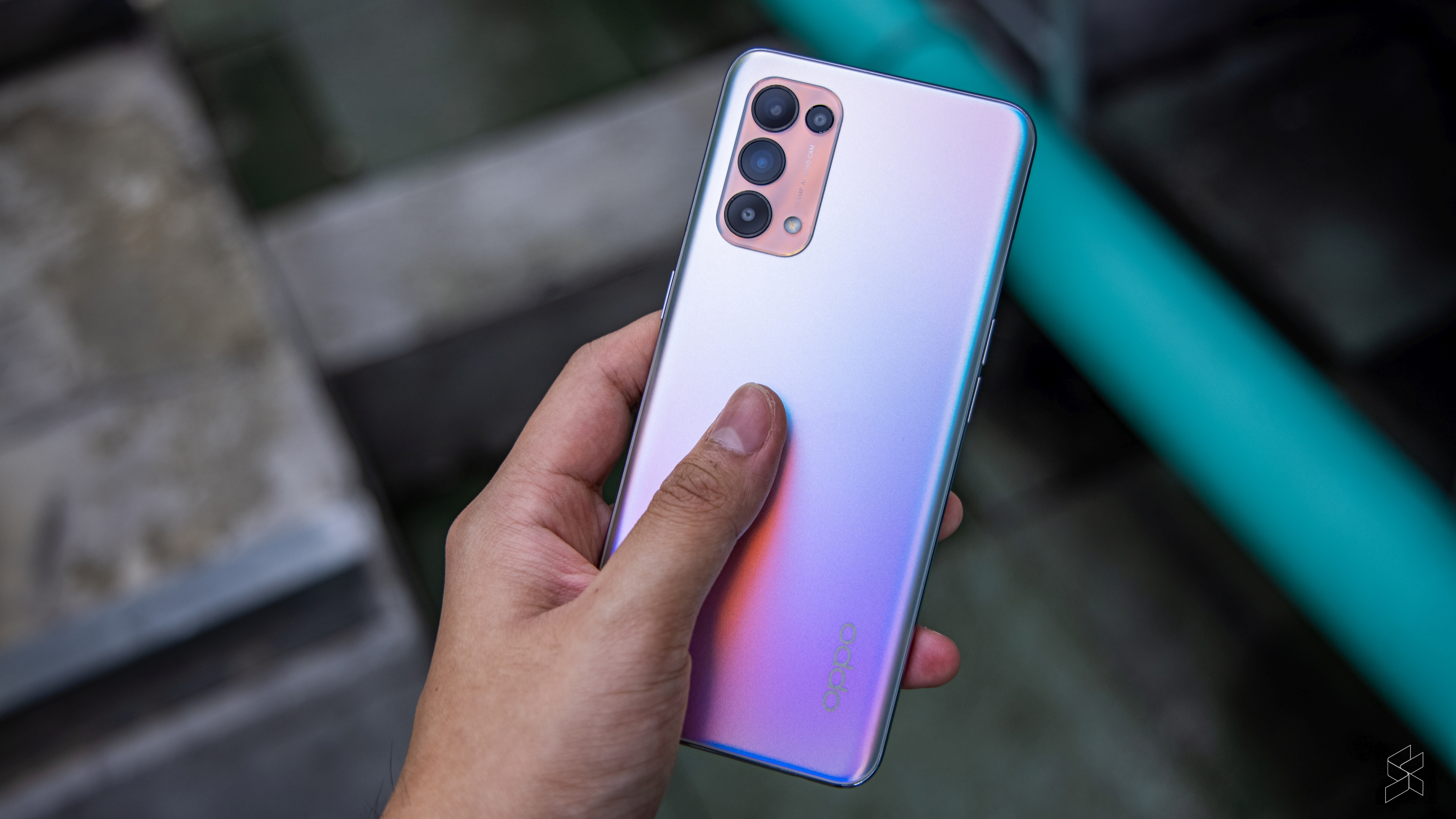
Coupled with the frame, the smartphone doesn’t feel particularly expensive in the hand. But it does feel well put together and the buttons are satisfying enough to press.
On the inside, the Oppo Reno 5 is powered by a Qualcomm Snapdragon 765G processor. This is a very capable mid-range SoC and will also give the Reno 5 access to 5G connectivity. You get 8GB of RAM and 128GB of internal storage. It’s a pretty good place to start, but there is no option for microSD expansion.

Performance during my brief time with the device was pretty good. Everything is smooth as expected from this processor though I will point out that the unit I have with me isn’t running on the final version of the software. It’s an early unit that Oppo Malaysia sent to us to check out, so it’s not on ColorOS 11 just yet. But, we have seen what this processor can do in phones like the Nord, so I don’t think performance will be a big issue.

Of course, this smooth operation is helped out by the fact that the Reno 5 has a nice 6.4” AMOLED display with a 90Hz refresh rate. I’ve always liked this combination because you get the nice contrast of an AMOLED panel with the buttery smoothness of a fast refresh rate. Viewing angles are pretty good too, as is the sharpness from the Full HD+ panel. The punch hole may be annoying to some, but I prefer it over a big notch.

Perhaps the only cause for concern here is the 4,300 mAh battery. For 2021, it is definitely not on the big side of things, as many phones are shipping with 5,000 mAh cells already. Oppo hopes to offset that with 65W SuperVOOC fast-charging, giving you a full charge in about 35 minutes. That’s mighty fast, but I personally prefer longer battery lives over fast-charging because I charge my devices overnight.

The Reno 5 has a quad camera setup at the back, and a 32MP selfie shooter up front. Naturally, the phone also includes the whole host of Oppo’s AI features plus a dual-video mode that is basically Nokia’s Bothie feature from way back in the day. The phone will also do up to 4K video recording, and it also has an Ultra Steady mode for extra stabilisation but that will kick your resolution down to Full HD.
Personally, I don’t see a huge difference between the ultra steady and regular stabilisation at 4K, and what’s particularly disappointing is both modes suffer from the same kind of jitters when trying to smoothen images.
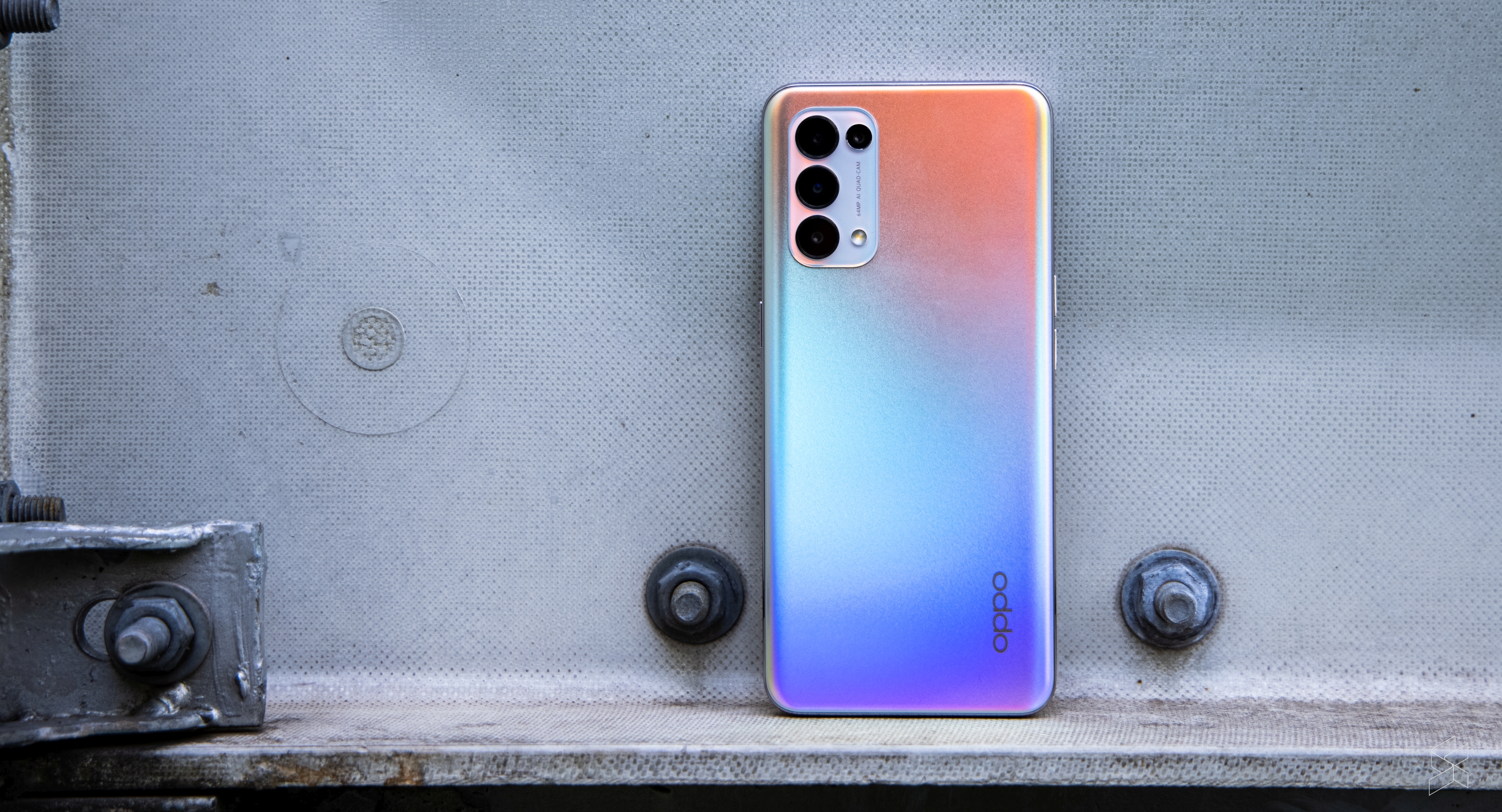
Photography with the Reno 5 is pretty decent for its class, in good lighting. It nails colour and white balance in daylight, but there is improvement that could be made in the detail department.
Wide Camera
Ultra Wide
Things quickly fall apart in low light however. There’s a lot of luminance noise with night mode turned off, and a very noticeable green tint. Turn night mode on and you’re greeted with colour noise instead, and the tint shifts dramatically into a magenta one.
Selfies have Oppo’s trademark beautification on by default, but you can turn that off which is nice. I am, however, a little disappointed with how washed out the colours look, and how dramatically it changes my skin tone.

After spending this time with the Oppo Reno 5, I can confidently say that what we have here isn’t the boundary pusher that something like the Find X was. It doesn’t do anything radically unique nor does it do anything particularly new to try and change the game.

But, that’s not necessarily a bad thing. The ingredients that make up the Reno 5 are pretty promising because if you peel away the Oppo badging and software, what you end up with is basically the building blocks for the OnePlus Nord. And that is a pretty good phone for the money.

However, that is the key distinction here: the price. In Malaysia, the Oppo Reno 5 with 8GB of RAM and 128GB of storage is priced at RM1,899 while the Oppo Reno 5 Pro with 12GB of RAM and 256GB of storage is priced at RM2,599. That means the device featured in this piece is only RM100 more than a base-model OnePlus Nord.

For that RM100 extra, you’re getting a higher-resolution main camera at the back (64MP instead of 48MP), you lose a selfie camera up front, and you get a bigger battery. But, the rest of it is pretty much identical. I’d give the feel on the OnePlus a little bit of an edge because I think that it feels slightly more premium due to the gloss nature, but that’s really more of a preference thing, as is the software that these smartphones run on.

Personally, I’d still go for the OnePlus Nord, because it is slightly cheaper, and I don’t mind the camera downgrade. Battery life on the Nord is also pretty good, and I definitely prefer the near-stock Android skin that OnePlus puts in their phone.
What do you think? Would you pick the Reno 5 over the Nord? Let me know in the comments below.
Photography by Rory Lee with the Canon EOS R5.



